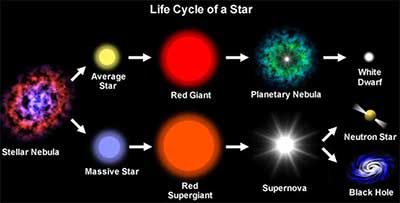Death of Stars
In News
IIT Guwahati working together with Germany-based Max Planck Institute for Physics and US’ Northwestern University has found primary hints to better understand the reason for the death of stars.
About
The researchers have found that the reason for the death of stars lies in its subatomic particles called neutrinos in the supernovae, and also stated that all the three species of neutrinos are important, rather than often believed to be two.
Supernova Neutrinos
When a gigantic star at the end of its life crumples down to a neutron star, it radiates almost all of its binding energy in the form of neutrinos, most of which have energies in the range 10-30 MeV. These neutrinos come in all flavors, and are radiated over a timescale of several tens of seconds. The neutrino luminosity of a gravitational collapse-driven supernova is typically 100 times its optical luminosity.
When the star collapses it explodes and this explosion outshines other stars present in the galaxy for a short while. Such explosions known as Supernova are important to study because the entire universe is made up of these types of explosions.
The mechanism of explosion of supernova is still a mystery but the reason for the core collapse can be solved with the help of neutrinos. Neutrinos are the only matter possessing the information from the core of the star.
There are three categories of Neutrinos – electron, mu and tau – and Supernovae is the only natural source of the creation of neutrinos as well as antineutrinos. This implies that most of the researches were being executed by this assumption that neutrinos and antineutrinos were behaving in the same way when they were expelled from the withering star.
Conclusion
In very dense core of supernovae, neutrinos link with each other, and they might interchange their flavors. This interchange can happen very fast and can impact the process of the supernova because neutrinos of different categories are released from the explosion with different angular distribution.
The conversion of flavors is non-linear, and for the first time, the scientists carried out nonlinear simulations of this rapid conversion between all three species of neutrinos.
This could be done because new simulations of supernovae exhibited the presence of muons, leading to the creation of asymmetry between antineutrinos and muon neutrinos, which were else taken to be zero. This has inferred three flavor effects.
The research has clearly exhibited the importance of all the three flavors of neutrinos, leading relevancy of all three species of neutrinos.







